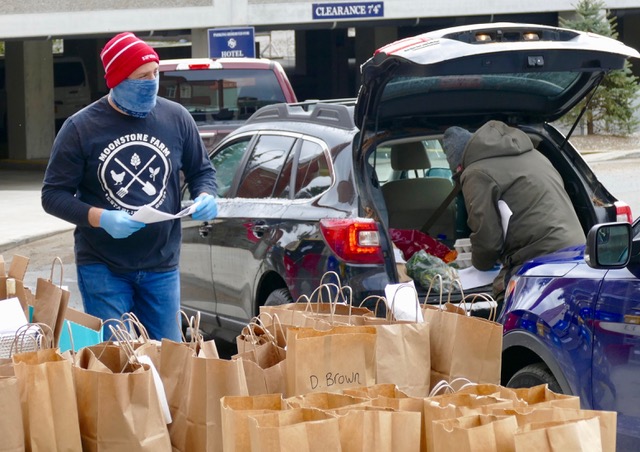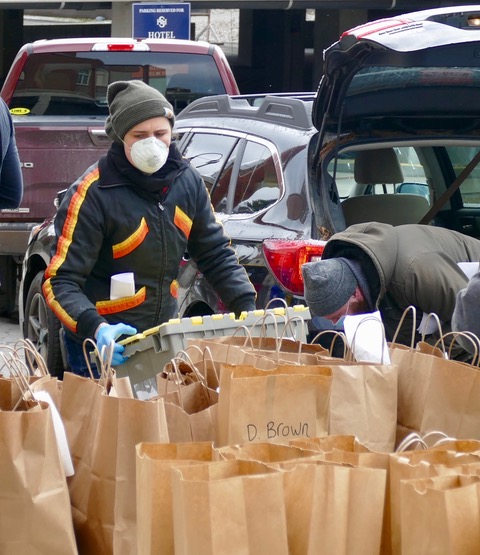
By Tim Rowland
By early March, Adirondack food producers were beginning to understand that their markets in the spring of 2020 were going to be very different. There would be no public stalls heaped with fragrant breads or tempting greens and spring vegetables for the public to poke, squeeze and sniff. Nor would there be the same number of restaurants jockeying for the best local meats, cheeses and eggs.
And as Adirondack communities sought to flatten the curve, the Saranac Lake Farmers’ Market also wanted to be ahead of it. So the popular event’s organizers sketched out a Plan B, figuring out an alternate location and a process by which wholesome, local foods could get into the customers’ hands with a minimum of handling and interaction. And voila, the Farmers’ Market became the Farmers’ Park-It.
“We could have just stayed outside and maintained social distancing, but it would be difficult to control the crowds as much as we’d like,” said Jake Vennie-Vollrath, a food advocacy volunteer and founder of the ADK Noodle Company.
The winter market had been located in the Hotel Saranac, which of course was no longer an option as businesses began shutting down in March. By that time, Vennie-Vollrath said, market volunteers had conceptually sketched out an alternative.
Behind the Hotel was Academy Street, a conveniently one-way and low-traffic route that allowed for traffic control. Throughout the week, customers are able to “shop” on the websites of 10 local vendors and submit their orders by 9 p.m. Thursday. (Check the Saranac Lake Farmers’ Market facebook page for the order form each week.)
Saturday morning the vendors drop off the orders and leave. The market opens at 10 a.m., and for the next two hours, customers drive through the alley where their orders are brought to them by volunteers. “That minimizes the contact (with the package) to basically just the producer and one volunteer,” Vennie-Vollrath said. “We’ll have it all sorted and ready to go, and the customer can pick it up in less than a minute.”
Not only is it efficient and low-contact, there are some side benefits as well. Vendors know exactly how much product to bring, and do not have to pay someone to sit in a booth all day. That’s important, because the commercial shutdown has constricted the amount of labor farms can afford, and employee time is better spent in the fields or kitchens.
The Saranac Lake model is also drawing interest from other farmers’ markets in New York and as far away as Montana and California, which are looking for the best way to get local food onto local tables in the times of a national shutdown.
The Farmers’ Park-it has been successful, drawing 120 to 140 orders a week. With restaurants shut down or constricted to curb-side pick up, Vennie-Vollrath said it’s critical that producers be able to make up some ground in other outlets — and the Farmers’ Park-It seems to be doing just that. The community, he said, has been rallying around local producers.
“I feel like people realize how much everybody else is hurting and they recognize the need to keep their money in the local community,” he said.

About the author: Tim Rowland is a freelance writer raising belted Galloway beef cattle in Jay, New York.
To learn more, check out this Todd Moe, NCPR interview with Jacob Vennie-Volrath, market manager for the Saranac Lake Farmers’ Park-It and Carly Summers at Adirondack Harvest.
And please take a minute to learn more about and take our public survey to understand community relationships with local food.
